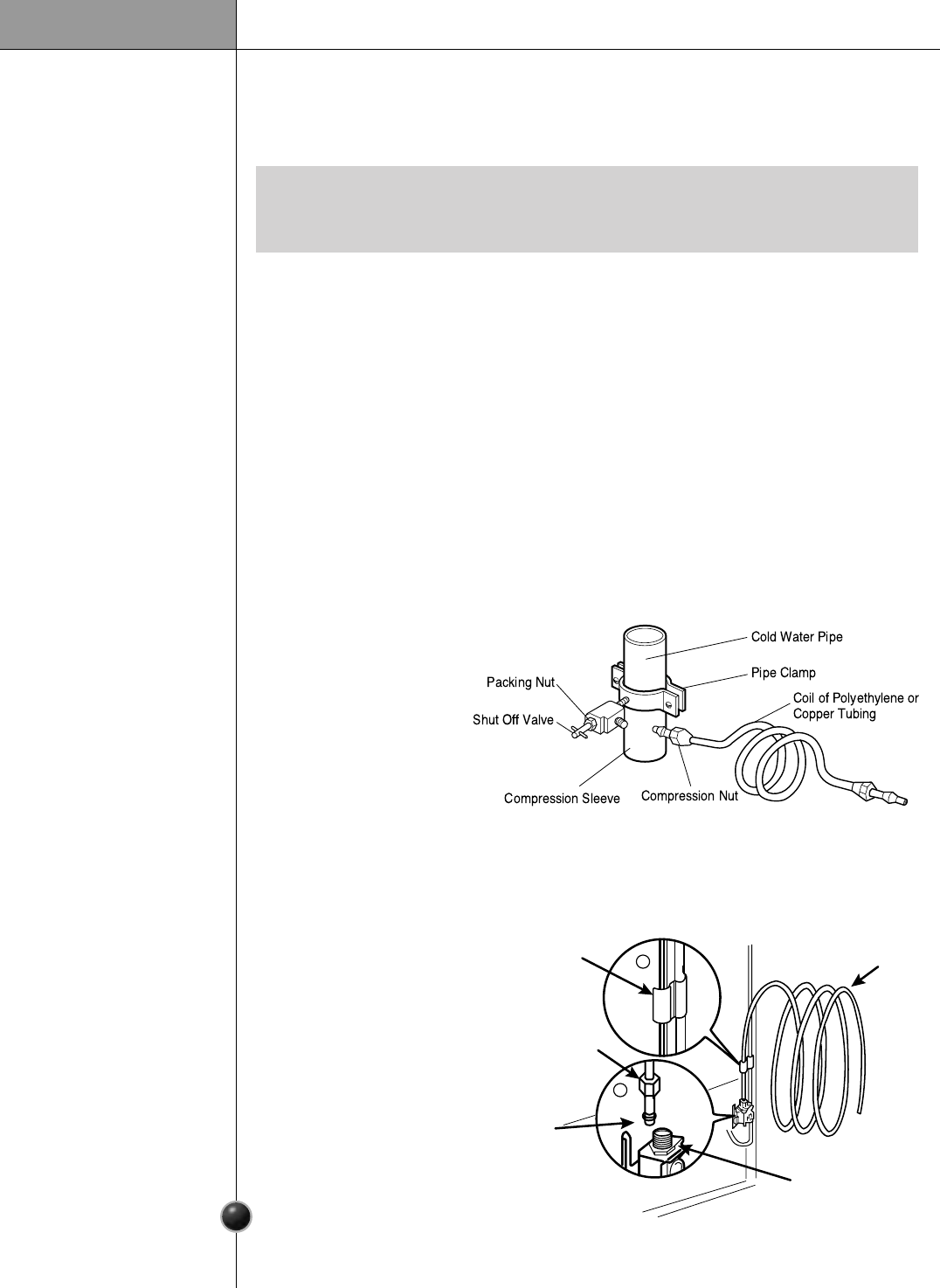
1. Unplug refrigerator or disconnect power.
2. Turn OFF main water supply. Turn on the nearest faucet to relieve the pressure on the
line. It may help to open an outside faucet to allow the water to drain from the line in
the house.
3. Find a 1/2-inch to 1-1/4-inch vertical COLD water pipe near the refrigerator.
Connect
the Tubing to
Water Line
•
Horizontal pipe will work, but the following precaution must be taken: Drill on the top of the pipe
not the bottom. This will help keep water away from the drill. This also keeps normal sediment
from collecting in the valve.
NOTE
4. To determine the length of copper tubing you will need, measure from the connection
on the lower left rear of the refrigerator to the water pipe. Add 7 feet (2.1m) to allow
for moving refrigerator for cleaning. Use 1/4-inch O.D. (outside diameter) copper
tubing. Be sure both ends of copper tubing are cut square.
5. Using a drill, drill a 1/4-inch hole in the cold water pipe you have selected.
6. Fasten shut-off valve to cold water pipe with pipe clamp. Be sure outlet end is solidly
in the 1/4-inch drilled hole in the water pipe and that the washer is under the pipe
clamp. Tighten packing nut. Tighten the pipe clamp screws carefully and evenly so
washer makes a watertight seal. Do not overtighten or you may crush the cooper
tubing, especially if soft (coiled) copper tubing is used. Now you are ready to connect
copper tubing.
7. Slip compression sleeve and compression nut on copper tubing as shown. Insert end
of tubing into outlet end squarely as far as it will go. Screw compression nut onto
outlet end with adjustable wrench. Do not over tighten.
8. Place the free end of the tubing into a container or sink, and turn ON main water
supply and flush out tubing until water is clear. Turn OFF shutoff valve on the water
pipe. Coil the copper tubing as shown below.
Installation
6
10
Coil of Polyethylene or
1/4" Cooper Tubing
Tubing Clamp
1/4"
Compression
Nut
Ferrule
(sleeve)
Refrigerator Connection
1
2
Operation Instruction Guide
Before making the connection to the refrigerator, be sure the refrigerator
power cord is not plugged into the wall outlet.
• If your refrigerator does not
have a water filter, we
recommend installing one. If
your water supply has sand or
particles that could clog the
screen of the refrigerator’s
water valve. Install the filter in
the water line near the
refrigerator.
1. Remove the plastic flexible
cap from the water valve.
2. Place the compression nut and
ferrule (sleeve) onto the end of
the tubing as shown.
3. Insert the end of the copper tubing into the connection as far as possible. While
holding the tubing, tighten the fitting.
Connect the Tubing
to the Refrigerator


















